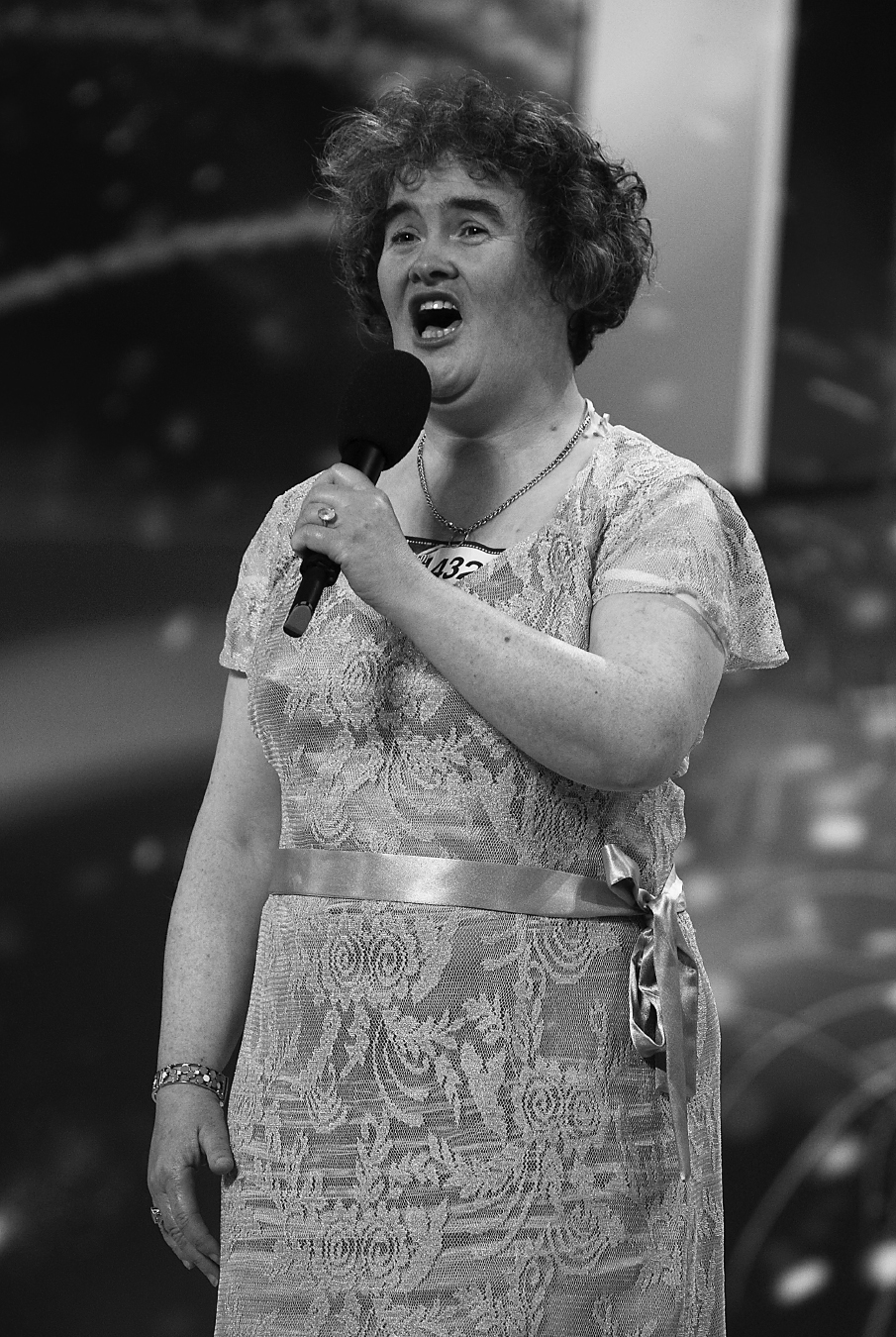2 Perceiving the Self and Others
2 Perceiving the Self and Others
Page 28

 Look for LearningCurve throughout the chapter to help you review.
Look for LearningCurve throughout the chapter to help you review.
When Susan Boyle took the stage at the Britain’s Got Talent competition in 2009 and told the audience and judges that she wanted to be a professional singer, she was met mostly with eye rolls, barely muffled giggles, and at least one ironic whistle. In a society that equates youth, beauty, and glamour with talent, people didn’t expect much from a middle-aged, overweight, never-been-kissed cat lady from Scotland. As the music to “I Dreamed a Dream” from Les Misérables cued up over the sound system, viewers steeled themselves for what they thought would be a cringe-worthy performance.
But by the time Boyle had belted out the first bar, those derisive expressions had melted away. During her pitch-perfect performance, cameras scanned the audience, capturing tears welling up in eyes that had been cynically rolling just a few minutes prior. As she headed into the bridge of the song and audience members leaped to their feet, television presenter Anthony McPartlin joyfully chided viewers watching at home: “You didn’t expect that, did you? Did you? No!” Judge Piers Morgan told Boyle, “Without a doubt, that was the biggest surprise I’ve had in three years of this show. . . . Everyone was laughing at you. No one is laughing now.”
Within hours, footage of Boyle’s performance was on YouTube, snatching upward of two million hits in less than three days; today, it remains one of the most watched You Tube videos ever. Boyle would go on to live the dream she dreamed with a new look, a successful debut album and tour, and popularity that continues to this day.
CHAPTER OUTCOMES
After you have finished reading this chapter, you will be able to
Describe how our personal perspective on the world influences our communication.
Explain how we use and misuse schemas when communicating with others.
Define the attributions we use to explain behavior.
Describe how cultural differences influence perception.
Identify how our self-concept—who we think we are—influences communication.
Describe how our cognitions about ourselves and our behavior affect our communication with others.
Most people know that the ability to sing has little to do with one’s appearance. So why were audiences stunned by Susan Boyle’s performance on Britain’s Got Talent? The answer lies in perception.
We all have unique ways of perceiving ourselves, others, and the world around us, and we communicate based on those perceptions. Perception is a cognitive process through which we interpret our experiences and form our own unique understandings. Those thoughts, or cognitions, influence how and what we communicate to others. They also affect how we interpret others’ behaviors and messages. Thus, understanding the role that perception plays in communication is crucial to our success as communicators. In this chapter, we explore how we see ourselves, how we see others, and how culture affects these perceptions.